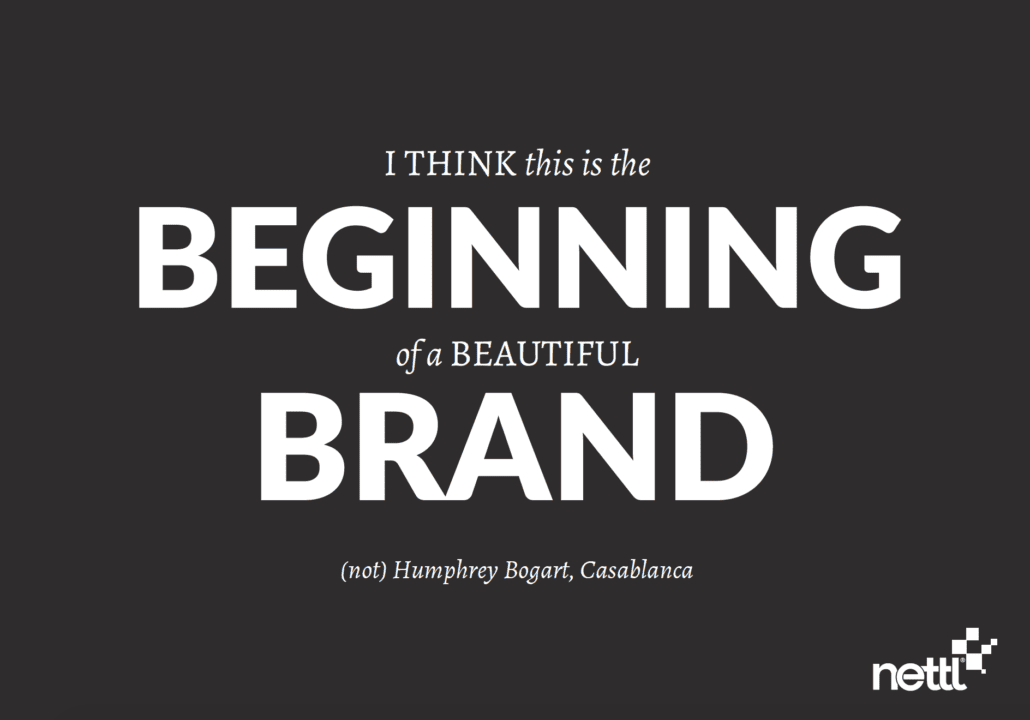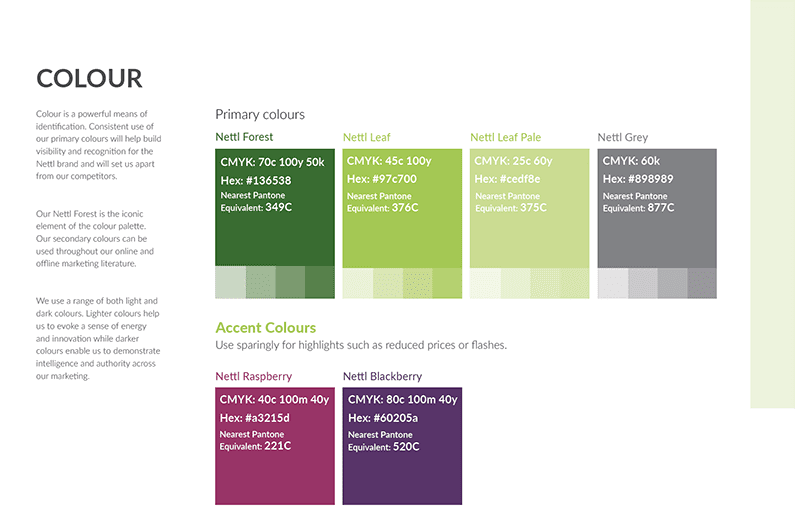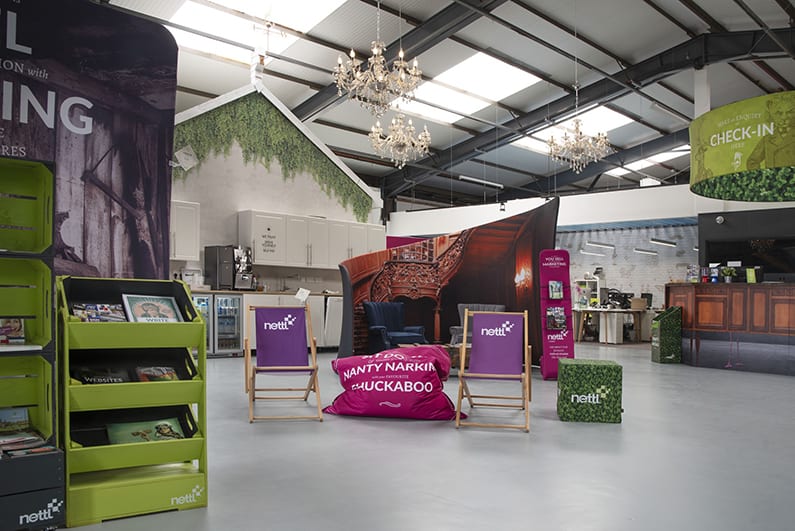Does my business need brand guidelines?
approx 9 minute read
What are Brand Guidelines?
So you have Brand Guidelines, Brand Identity Documents, Corporate Identities and Style Guides… Each is the name of a document that’s largely similar to the other. They are manuals to using a business’ brand in the intended way. Branding Guides share simple rules for using everything from a business’ logo and colour scheme to tone of voice and font. It might tell you how best to structure your marketing pieces, or what substrates to print on (and what to avoid). This little manual holds great power in your business.
What can Brand Guidelines add to my business?
Brand Guidelines, Brand Identity Documents, Corporate Identities and Style Guides are different terms you will hear to describe an informative piece that shares instructions on using a business’ brand. As we discuss what this document can bring to your business, we’ll interchange between each of those terms. They tell you (and your employees and your external suppliers) how to create content and interact with clients in a way that is cohesive to the overall brand.
Creating brand consistency brings authenticity to your business because it makes you look more professional and with that, trustworthy. Once your branding (including your values, logo, colours, design elements, tone of voice and more) have been concreted, a Brand Guide can bring serious value to your business. Here are some of the ways Brand Guidelines can add to your business’ success.

Use Brand Guidelines to Create Clarity
In order for your design team to create a Brand Identity Document, each aspect of the brand has to have been agreed upon. Use this as an opportunity to gain clarity on what your brand is. The act of creating this set of guidelines in itself, makes you seek agreement on everything from the colours of your branding to the values you stand for. In order to write them in a book, you must first be clear on what your brand is made up of.
The first port-of-call for many creative teams to establish a new brand is identifying why you exist. Once you’ve achieved clarity and consensus on your primary business goal, you can then start identifying ways to communicate your message to employees, customers and suppliers. You can use this to identify who you best serve, how you work and the best ways to position your business within the market.
Take this opportunity to agree what your brand means and what makes your brand you. How do your values impact the way you prioritise work, or deal with customers?
With more and more new businesses emerging, this need to clarify who you are grows increasingly important. Are you an established brand with new competition? Are you a new business, looking to make a name for yourself? Or maybe you’re an existing business that has pivoted its offering over the past 12 months. In each scenario, clarity is key to successfully sharing your message and aligning your efforts.
Having this clarity seeps into countless aspects of the way you run your business. When shopping for office furniture, do your purchases reflect your agreed colour palette? Does that newspaper write up reflect the tone of your brand and how you want to be perceived as a business?
Scale and Grow your Brand with Consistency
Next to the clarity that Brand Guidelines drive, comes the consistency they enable. When best practices are outlined with examples and explanations, it becomes much easier to scale a brand across many mediums.
Inconsistency in the way your business presents itself often leads to a) lower levels of customer recognition, because fewer patterns are being formed and potential customers have less relevant context to relate to your brand. If they’re less used to it, they’ll be slower to think of your brand when they need you. And b) trust will take longer to build amongst customers. Their expectations are not being met if you continuously change the tone of voice you use, the way you present yourself, the way you interact with clients. A seamless flow of trust and recognition are hugely important in successful selling. Make it easy for clients to recognise and trust your brand by abiding by a set of Brand Guidelines.
Inconsistencies can sneak into your branding and marketing as you work with external suppliers or grow your internal team. One person’s interpretation of your branding might be entirely different to another. Don’t leave this to chance, instead, share Style Guides with your internal team and external suppliers so everyone is singing from the same hymn sheet.
Scalability – if your dream is to grow your business, to stop doing everything yourself, brand guidelines enable you to partner with others, internal and external and scale your voice, values and assets.
Communication: What’s expected of employees and those external suppliers?
Corporate Identities make it much easier to communicate what’s expected of your team. The clarity required to create your identity means Values will be agreed upon in a way that’s easy to understand and adopt. Similarly, documenting why you use a design element in a certain way helps others buy-in to the process and further grow your brand and its uses. Improve communication across departments and suppliers through Corporate Identity with beautiful imagery, impactful graphics and clear instructions.
A clear guide to your brand improves your employer branding because potential employees see your reason for existing, what they can expect from working with you and what would be expected of them. It enables employees to use the brand without having to ask someone to explain the best colour scheme for a branded piece or for instructions on replicating the business’ voice across social channels. An effective brand identity clearly communicates all of this to the reader.
Improve the service you get from external suppliers by having a good Style Guide that clearly shares with them the importance of your brand values, tone, message and aesthetics. This reduces project downtime as you eliminate the need for external suppliers to repeatedly confirm they are using the brand correctly.
What can go wrong if I don’t have Brand Guidelines?
With all the benefits Brand Guidelines can offer your business, what might go wrong if you don’t have Brand Guidelines in place?
- Your business may appear unprofessional, as marketing and branded materials are all slightly different
- The true voice of the business can get distorted or entirely discarded through mixed messages as each stakeholder adds their own interpretation to the brand
- Inconsistencies across aesthetics, voice and the values underpinning the service you offer can lead to disgruntled customers and an absence of brand fluency
- Wasted budget & efforts from employees and external suppliers repeatedly asking you about the different aspects of your brand, or worse still, not asking you and creating work that is not at all on-brand

Typical structure & contents of a brand identity document
Here are some ideas of what to include in your Brand Identity
Brand Values
Include your Brand Values to help your team understand what’s expected of them and what you prioritise as a business. This is great for your employer branding too, as it helps new team members understand what they can expect from you and what is expected of them. Find out more about the importance of Brand Values.
Tone of Voice
When your business speaks, what does it sound like? Do you want to emulate tradition and trustworthiness? Or perhaps you want your clients to read your message and think of avant garde dream-achievers. A few simple guidelines can help your team and suppliers replicate your business’ voice across everything from brochures to social media. Learn how to uncover and scale your business’ Tone of Voice.
Imagery
Use this section to guide suppliers like photographers as they achieve the picture perfect you. Advice around imagery and photography also helps your staff to snap candids for social media, cohesively. Include descriptions of the tones you use in imagery (cool or warm?) as well as colour palettes (colourful, monotone?) and features, setting and focus (Blurred backgrounds? Fluent character featured? Nature settings?)
Logo
How should the logo be presented on light? And dark? What’s the minimum size you can make your brand stamp and still maintain its integrity? How does your logo look across web, print or signage?
Colour Palette
What’s your iconic colour? What secondary colours do you use? Which colours should be featured most often and which should appear as highlights? Use this section to communicate the things to avoid and ensure when dealing with your brand colours to help everyone achieve the intended effect.
Fonts
Share with everyone the typefaces you stick to as a brand. You might want to include a primary and secondary font. Perhaps you use one for headings and another for paragraph text. Do you have an alternative font if the primary font is unavailable? Should certain headings, subheadings or paragraph text be in a particular colour, font or weight?
Design Elements
Do you use certain iconography, patterns or illustrations to communicate different messages or add to the visuals of your brand? Perhaps, like us, you have a fluent character who makes it easier for a potential customer to recall the brand. Maybe your designer created some customer patterns for your brand that you use across marketing literature? Share them here with examples of them in use.

How do I decide what to include in my Brand Guidelines?
Start small. If you already have a brand, but don’t have each of the sections above concreted, don’t worry. We create Brand Identity Documents that range from very simple with sections on Values, Logo, Font and Colour, right up to more comprehensive guides that include Tone of Voice, Imagery and Design Elements. Your local Nettl studio can help you to ascertain what to include, and how to add to your brand as you grow.
How do I use / get my team to use my Brand Identity Document?
So you’ve decided what assets, values and voice make your brand who it is, now how do you scale that? Here are some tips on implementing your Brand Identity Document across internal and external stakeholders.
Shared widely
Don’t be afraid to get your Brand Identity Document out there. Add it to your website, have a printed version in your office and feature it on your internal communications board. Some people might be reluctant to share Brand Guidelines publicly, but having a public version is very useful for ease of access and to build credibility as a business.
Easily understood, enjoyable to read
Bear the reader in mind as you and your creative agency plan your Brand Document. Remember to write it in the Brand Voice, but if your brand voice includes a lot of industry-specific terminology that might go over the reader’s head, it might be worth including a short glossary. Use imagery and lots of spacing to break up text and instructions. Include illustrations and examples of dos and don’ts to make the document really easy to understand.
Backed by Process
Implement a process in which you share the Brand Style Guide with any new suppliers you on-board who will be creating work for you or working on your behalf. Add it to the list of topics to discuss with new-starters as part of the induction process. Even if not everyone will be creating assets for your business, it’s important to share the Brand Values and reasons for being with both potential and new recruits.
Put to Work
Use the document widely and reference it often across internal and external communications. Draw from the Brand Document or link to it when creating content for:
- Website Content for Landing Pages & Blogs
- Business Stationery
- Social Media Posts, Comments & Messages
- Job Adverts
- Promotional Items
- Interviews Across all Mediums (Radio, Newspaper, Blogs)
- Video content

Who creates Brand Guidelines?
Many creative agencies can create Brand Guidelines for your business. If you have questions about what to include in your Style Guide or where to begin when creating your Corporate Identity, reach out to your local Nettl Studio and our designers will be delighted to help you streamline your branding.



